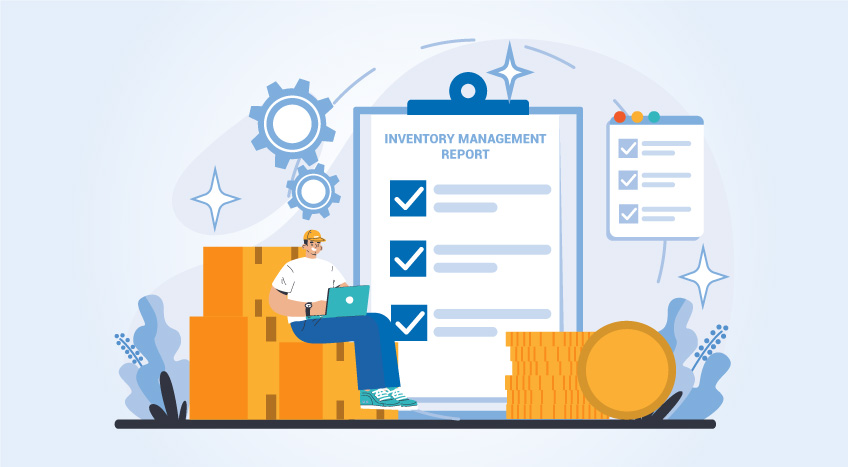- What is a profitability ratio?
- What is the significance of profitability ratios?
- What are the three main types of profitability ratios?
- Does a good profitability ratio exist?
- Which profitability ratio should you use for your business?
- TallyPrime for calculating profitability ratio and more
What is a profitability ratio?
Let us start with the profitability ratio definition. The profitability ratio shows how successful a business is in earning profits over a period of time in relation to operation costs, revenue, and shareholders’ equity. The higher the ratio, the better it is for the company because it shows that the business is highly capable of generating profits regularly. Profitability ratios come under financial metrics. While profitability ratios are important, they are often used alongside efficiency ratios because these show a business’s ability to generate income using its assets.
What is the significance of profitability ratios?
Profitability ratios are important for a range of reasons. Here are some of the main reasons why profitability ratios are vital for every business.
Uncovers business problems
Did you know that profitability ratios can help you understand your business better? While financial statements are extremely important for a business, they are limited in the sense that they provide an overview of your business. This means it is easy for problems to slip through the cracks so much so that you miss them. When you calculate the profitability ratio, you can find out problems that you didn’t realize your business had before. You might notice that a certain aspect of your business has a much higher cost than you thought. With the help of unveiling problems, you can find the solutions to these problems.
Aids in comparison
Comparing your business to other businesses is helpful in many cases. However, oftentimes business owners assume that comparing revenue is sufficient and call it a day. When you are comparing businesses, it is not sufficient to only compare revenues because it doesn’t show the complete picture of how a business is doing. For example, when you are comparing a small business with an enterprise, comparing revenues is a waste. However, when you compare using profitability ratios, it is a much better indicator of how your business is doing currently. This can show you how efficient your business is and what changes you can make to improve it further.
Beneficial for seasonal businesses
The profitability ratio comes in handy for seasonal businesses. Businesses can do this by collecting data on how they did in the past along with how much they earned. The same time period should be compared in every case because of the seasonality factor of these businesses. You can then get a detailed idea of when your business has the highest profits. According to that data, you can then make budget-related decisions that can help your business allocate enough resources. Additionally, you can plan and market accordingly to ensure you perform even better during your peak seasons.
Useful for investors
Profitability ratios are important because they can catch the attention of investors. When a business is generating good profits, it shows the investors that the business is going to be running smoothly for quite some time. It instills confidence in investors so they can make future investments in the business. Investors are encouraged when they see a good profitability ratio. They are much more likely to come on board to invest freely and increase their investment amount when they see that your business has a good profitability ratio.
What are the three main types of profitability ratios?
There are many types of profitability ratios. Here are the three main types of profitability ratios.
Return ratios
The return ratios require you to get the profit and loss statement and the balance sheet of your business. These ratios uncover your business’s ability to generate returns on investment based on the equity, assets, and debt your business has. The most common return ratios are return on equity (ROE), return on capital employed (ROCE), and return on assets (ROA). ROE shows you how well investments are being used to generate profits. ROCE shows you how well the capital resources of your business are being used such as debt and earnings. ROA shows you how well you are using total assets to generate profits.
Margin ratios
Margin ratios are considered one of the most important profitability ratios because of how much light they throw on your business. Margin ratios show you in detail how well your business converts sales to profits. The most important margin ratios are gross profit margin ratio, pretax margin ratio, net profit margin ratio, EBITDA margin, and operating profit margin. The gross profit margin ratio is how much profit your business has made after COGS. The pretax margin ratio refers to the profits made after factoring in COGS, operating costs, and non-operating costs.
The net profit margin ratio shows you how much your business has earned after the taxes and expenses have been accounted for. The earnings before interest, income tax, and other taxes, depreciation, and amortization, or EBITDA shows you your business’s financial performance. The operating profit margin shows you how much your business earns based on the operating activities.
Cash flow ratios
The cash flow ratios are profitability ratios that help you understand whether your business has a cash flow issue or if you have more than enough cash in hand. Cash flow ratios are vital as they show you how prepared you are in case anything goes wrong and you need immediate cash. The two most important cash flow ratios are the net cash flow ratio and cash flow margin ratio. The net cash flow ratio shows you whether you need more financing or you can manage with what you have currently. The cash flow margin ratio reveals your cash movement during a certain period.
Does a good profitability ratio exist?
When you are calculating the profitability ratio for your business you may wonder what you should aim for. Generally, the higher the ratio, the better your business is operating at present. However, it also depends on the ratio and your business specifics. For example, the operating margin ratio is best if it is more than 1.5 percent while many even aim for 2. When it comes to the net income ratio, a good aim is 5 percent. Of course, these percentages are not set in stone but you should always work to improve your business in all the ways you can to improve the profitability ratio.
Which profitability ratio should you use for your business?
It will be incorrect to say that only one profitability ratio is sufficient for you to use for your business. Instead, it is vital that you use a range of profitability ratios. These can together help you determine the problems your business is facing and show you where you are spending more than you should. Each type of profitability ratio shows a different side of your business. And so when they are used together you can uncover several problems and work on them one by one. This will ensure your business cuts expenses and costs where it should while increasing spending in places where it is best for your business’s growth.
TallyPrime’s financial data for calculating profitability ratio and more
Profitability ratios are only useful when you have the correct data and information to compare the aspects of your business. If you have wrong data about your expenses, profits, cash flow, and so on, then the results and ratios you calculate from the data will all be incorrect. This will have a snowball effect because it will yield wrong insights which means you will end up doing more damage than good. Starting with a business management software solution like TallyPrime ensures you have the correct data of your business at all times so that you can calculate the profitability ratios without mistakes at any point you need.
TallyPrime is accounting software that lets you do so much more with your numbers. It lets you manage inventory efficiently so that you maintain the right level of stock. It lets you manage stock before it reaches its expiry date. It also has invoicing features that help customize and generate invoices in a few minutes. It comes with cash flow management and credit management to ensure your business is never low on cash. TallyPrime is a payroll management software tool as it automates employee payments and much more. It also comes with powerful reporting features that give you complete insights into your business.
Read More:










